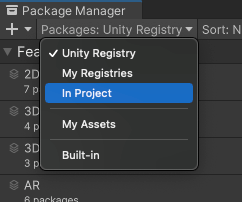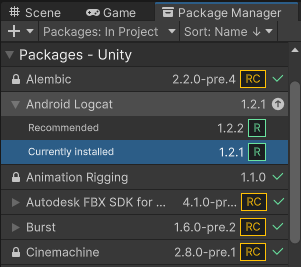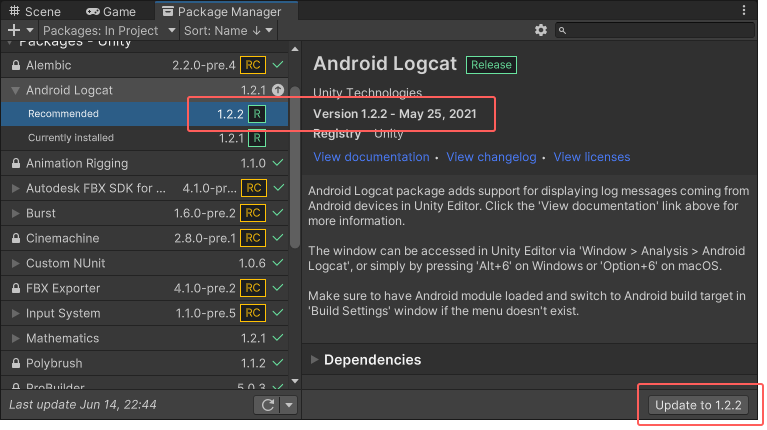Switch to another version of a UPM package
Use the information on this page to update UPM packagesA Package managed by the Unity Package Manager. Refer to Packages.
See in Glossary that you installed from the Unity Registry or a scoped registry, or from a local source. The information on this page also applies to packages you installed from the Asset Store, if they’re in the UPM format.
If you want to install a specific version of a package, install the package by name and follow its optional step to specify a version.
If you want to update packages that were installed from a Git URL, you can either re-install it as a Git dependency using a new revision or re-install it from the Unity Registry. For more information about how to specify revisions with Git dependenciesThe Package Manager retrieves Git dependencies from a Git repository directly rather than from a package registry. Git dependencies use a Git URL reference instead of a version, and there’s no guarantee about the package quality, stability, validity, or even whether the version stated in its package.json file respects Semantic Versioning rules with regards to officially published releases of this package. More info
See in Glossary, see Targeting a specific revision.
To update a package while in the In Project, Unity Registry, or My Registries context:
-
Open the Package Manager window and select In Project from the PackagesPackages are collections of assets to be shared and re-used in Unity. The Unity Package Manager (UPM) can display, add, and remove packages from your project. These packages are native to the Unity Package Manager and provide a fundamental method of delivering Unity functionality. However, the Unity Package Manager can also display Asset Store packages that you downloaded from the Asset Store. More info
See in Glossary drop-down menu.
Switch the context to In Project An arrow icon (
 ) appears next to any packages that have updates available.
) appears next to any packages that have updates available. Select the installed package you want to update from the list of packages. The package information appears in the details view.
-
The lock icon (
 ) indicates that this package and version is locked to an installed feature set. To unlock the package and select another version, click the Unlock button.
) indicates that this package and version is locked to an installed feature set. To unlock the package and select another version, click the Unlock button.Note: The package is only temporarily unlocked. If you change to a different list context, or close either the Package Manager or the Editor, the package reverts to being locked again. However, if you switch versions when the package is unlocked (for example, with the Install a package from a registry by name method), the package stays unlocked.
-
In the list of packages, click the expander icon to the left of the package name.

Currently installed and Recommended are the only versions available Note: If you see the See other versions link after expanding the package, you can click it to see the list of all available versions for that package.
-
Select any version of the current package to see the details specific to that version in the details view.

Update to button in the bottom right corner of the details view -
Click the Update to button.
When the progress bar finishes, any new functionality is immediately available.
Note: If you switch to an older version of a package, you might have to run the API Updater on the package contents.